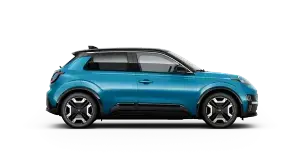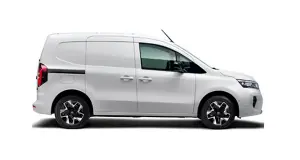Learn why News UK voted the Nissan Qashqai e-POWER best Hybrid car in the UK 2024.
Discover more about Nissan’s e-POWER and hybrid cars. Two very different ways in which Nissan combines the strengths of a petrol engine and an electric motor for a thrilling electrified experience.
Learn why News UK voted the Nissan Qashqai e-POWER best Hybrid car in the UK 2024.
Discover more about Nissan’s e-POWER and hybrid cars. Two very different ways in which Nissan combines the strengths of a petrol engine and an electric motor for a thrilling electrified experience.
Learn why News UK voted the Nissan Qashqai e-POWER best Hybrid car in the UK 2024.

Hybrid technology: the best of both worlds
Typical hybrid vehicles use the combination of a petrol engine and an electric motor to turn the wheels.

e-POWER, a unique combination
e-POWER uses a powerful electric motor to turn the wheels 100% of the time and a petrol engine to charge the battery [1].
Nissan  compared to Nissan
compared to Nissan  technology
technology
Nissan  compared to Nissan
compared to Nissan  technology
technology
Nissan  compared to Nissan
compared to Nissan  technology
technology
| Hybrid |
e-POWER |
|
|---|---|---|
| How it works | Powered by a combination of petrol engine and an electric motor |
A combination of petrol engine which charges the battery and an electric motor that turns wheels |
| What powers the wheels? | Petrol engine, electric motor or both. |
Electric motor 100% of the time |
| How is the battery charged? | Charges while driving by the combustion engine and regenerative braking |
Charges while driving by the combustion engine and regenerative braking |
| Does it need petrol? | Yes |
Yes |
| Hybrid |
e-POWER |
|
|---|---|---|
| How it works | Powered by a combination of petrol engine and an electric motor |
A combination of petrol engine which charges the battery and an electric motor that turns wheels |
| What powers the wheels? | Petrol engine, electric motor or both. |
Electric motor 100% of the time |
| How is the battery charged? | Charges while driving by the combustion engine and regenerative braking |
Charges while driving by the combustion engine and regenerative braking |
| Does it need petrol? | Yes |
Yes |
| Hybrid |
e-POWER |
|
|---|---|---|
| How it works | Powered by a combination of petrol engine and an electric motor |
A combination of petrol engine which charges the battery and an electric motor that turns wheels |
| What powers the wheels? | Petrol engine, electric motor or both. |
Electric motor 100% of the time |
| How is the battery charged? | Charges while driving by the combustion engine and regenerative braking |
Charges while driving by the combustion engine and regenerative braking |
| Does it need petrol? | Yes |
Yes |
How do  and
and  powertrains differ?
powertrains differ?
How do  and
and  powertrains differ?
powertrains differ?
How do  and
and  powertrains differ?
powertrains differ?


LEGEND
LEGEND
LEGEND
 Transmission Transmission |
 Combustion engine Combustion engine |
 Electric motor Electric motor |
 Battery Battery |
 Inverter Inverter |
 Generator Generator |
 Transmission Transmission |
 Combustion engine Combustion engine |
 Electric motor Electric motor |
 Battery Battery |
 Inverter Inverter |
 Generator Generator |
 Transmission Transmission |
 Combustion engine Combustion engine |
 Electric motor Electric motor |
 Battery Battery |
 Inverter Inverter |
 Generator Generator |
How does a  car work?
car work?
How does a  car work?
car work?
How does a  car work?
car work?

Petrol, electric, or both
The Nissan hybrid system makes use of both the petrol engine and electric motors to drive your car. The vehicle can rely on either source or combine the strengths of both to bring you the best balance of performance and efficiency [2].

Chooses the ideal energy source
The system optimises the energy source automatically, reacting to the pressure applied to the accelerator and the battery charge level. All you have to do is drive.

A simple Step for smoother driving
e-Pedal step gives you the option of one pedal control, so you can actively accelerate & decelerate through the accelerator pedal. You'll only need to touch the brake when you decide to stop [3].
How does an  car work?
car work?
How does an  car work?
car work?
How does an  car work?
car work?

Fuelled by petrol, driven by electric
Discover a new driving experience without changing your habits. Keep using fuel but enjoy instant torque as soon as you press the accelerator.

Recharges on the go
You don’t need to plug-in an e-POWER vehicle. The petrol engine produces energy that charges the battery when the vehicle needs it. The electric motor alone drives the vehicle's wheels 100% of the time.

Recycles energy from braking
The friction caused by braking produces energy, and e-POWER doesn't let all the energy usually lost through breaking, go to waste. The regenerative braking system on e-POWER converts kinetic energy from deceleration into electrical energy and feeds it back to the battery.

Endorsed by industry experts
"We can't get enough of them. Qashqai is the car that started it all and now the clever e-POWER system moves the game on even further.
It has all the advantages of an electric car without the not-so-good bits like recharging with a plug. The petrol engine charges the battery and electric motor drives the wheels. We averaged 46mpg over 700 miles, which is mighty impressive for a family SUV, plus it's designed, engineered and made in Britain." [4]
Rob Gill, The Sun's Motors Editor.
Available Nissan  and
and  models
models
Available Nissan  and
and  models
models
Available Nissan  and
and  models
models
Discover all our electrified powertrains
Discover all our electrified powertrains
Discover all our electrified powertrains

All your questions about  answered
answered
All your questions about  answered
answered
All your questions about  answered
answered
What is the difference between e-POWER and 100% electric or hybrid?
What are the components in e-POWER & how do they work?
What happens if the Lithium-Ion battery which powers the electric motor goes flat?
Does e-POWER come with all wheel drive?
How big is the Lithium-Ion battery in e-POWER compared to a standard electric vehicle?
All your questions about  answered
answered
All your questions about  answered
answered
All your questions about  answered
answered
What types of hybrid vehicle are currently offered by Nissan?
How is a Full Hybrid different from a Mild Hybrid?
Do hybrids have to be driven differently to conventional automatic vehicles?
What happens if the lithium-ion battery goes flat in a hybrid?
Is there a warranty on the hybrid battery?
[1] e-POWER is a unique powertrain it is not a 100% electric vehicle and requires petrol to generate power for the electric motor.
[2] Hybrid Electric Vehicle descriptions use comparison against the equivalent combustion engine model.
[3] You should not rely solely on driver convenience features. Some features may not work in all conditions and circumstances. Speed and other limitations apply. For terms and conditions relating to Nissan technologies, please click here.
[4] Figures quoted are those achieved by the road tester. Actual driving results may vary depending on factors including weather conditions, driving styles, vehicle load or any accessories fitted after registration.














